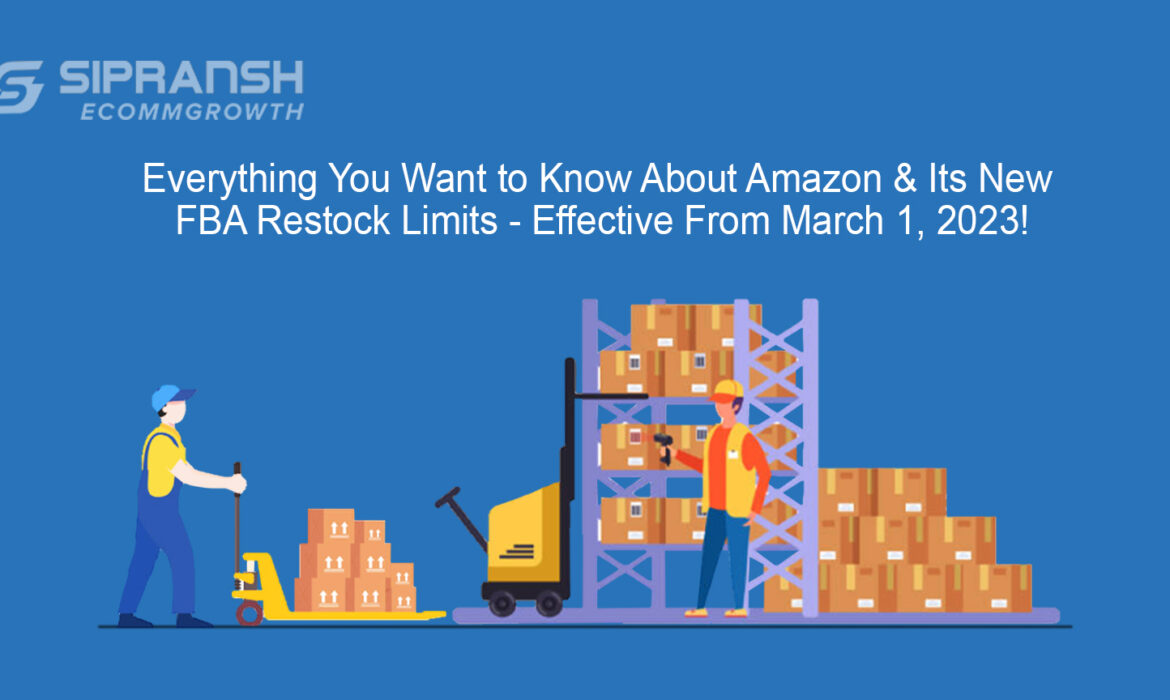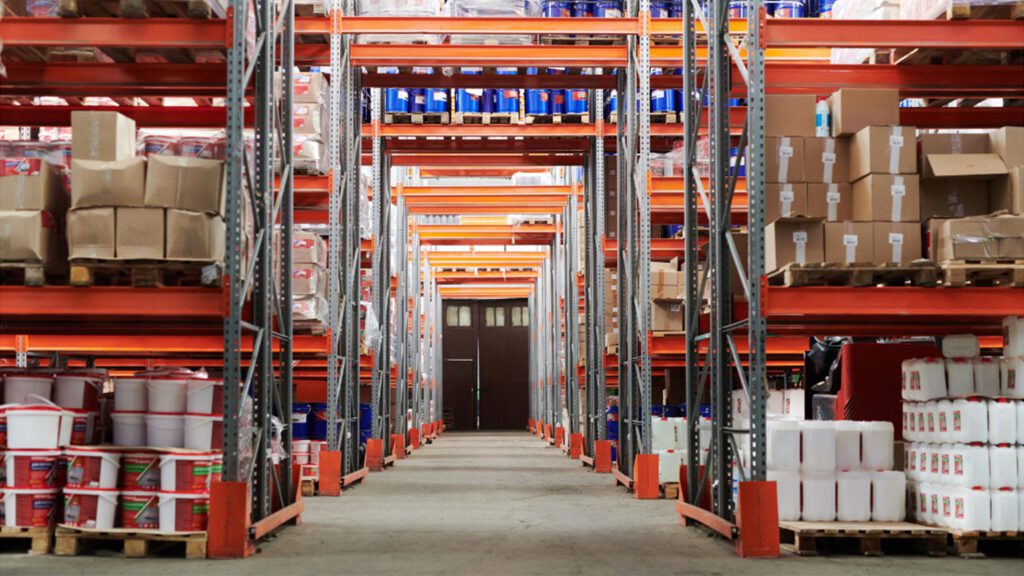
Fulfillment by Amazon (FBA) is a program where Amazon provides third-party sellers with a convenient solution while they sell on the marketplace. It takes care of everything from storing the products in a safe warehouse to packing them off and making them ready for delivery.
The FBA Restock Limits are a feature that Amazon implemented to manage its warehouse space and ensure that all sellers have access to the storage they need. However, even FBA comes with some limitations, and so over the past couple of years, Amazon has changed its FBA storage limits a few times. These changes caused confusion and frustration for sellers as it would limit, or in some cases, reduce the amount of inventory FBA sellers can send to Amazon’s fulfillment centers. Recently, Amazon had both weekly restock limits and quarterly storage volume limits, which — again — caused a lot of confusion.
Effective from March 1st, 2023, Amazon has removed the weekly restock limits and quarterly storage volume limits and replaced them with a single monthly capacity limit, called “FBA Capacity Limits”.
What Are FBA Restock Limits?

FBA restock limit or the newly called “FBA Capacity Limits” is an inventory-level restriction that specifies the maximum amount of inventory you can send and store at Amazon’s fulfillment centers under the FBA program at any given time. The restock inventory varies from seller to seller. Knowing your restock limits is important for maintaining policy compliance when selling on Amazon. Over the years, Amazon has experimented with different restock limits, switching from ASIN-level quantity to storage-type limits, which is the most recent one.
How are FBA Restock Limits Determined?
The FBA restock limits are influenced by the seller’s IPI score (Inventory Performance Index Score), as well as several other factors such as the seller’s sales history, current inventory levels, demand for the seasonal and peak selling periods for your products, forecasts for your ASINs, the new selection that you carry, deals that you’ve scheduled, fulfillment center capacity, and shipment lead time.
The Restock limits are measured by volume in cubic feet, and your capacity is based on your account type. You’ll receive one capacity limit for each type of storage you use. These limits can change over time based on the factors mentioned above, so it’s important for sellers to regularly monitor their inventory levels and adjust their restocking strategy accordingly. It’s also important to note that Amazon may adjust restock limits at any time without prior notice to the seller.
Your FBA limits will be heavily affected by your IPI score within the Inventory Performance section of Seller Central. The higher your IPI score is, the higher your capacity limits will be.
The top influencing factors of your IPI score include:

- Excess inventory: You want to avoid storing stale inventory that is not selling and only accumulating monthly storage fees.
- Sell-through rate: You want this to be as high as possible. The sell-through rate is determined by your sold and shipped units over the past 90 days divided by the average number of units in stock in Amazon’s fulfillment centers.
- In-stock rate: Amazon wants you to keep fast-selling items in stock as much as possible.
- Stranded inventory: Stranded inventory is when you have inventory stored in Amazon’s fulfillment centers, but there’s no active offer for the product. Keep this at 0%.
How Many Types Of Storages Does Amazon Have?
As mentioned above, the most significant factor is the storage type effective from March 1st, 2023. There are four types of storage:

- Standard-size Storage: Items that weigh at most 20lbs, with maximum dimensions of 18” x 14” x 8”
- Oversize Storage: Items that surpass the weight/ dimensions listed for standard size
- Apparel Storage: Clothes & accessories
- Footwear Storage: Shoes, slippers, boots, etc.
There will be an individual storage limit for these categories if the products are flame or aerosol-based. Since the change is different for each seller, sellers must be updated with all the new terms & conditions when it comes to Amazon Restock Limits.
Who is Subject to FBA Restock Limits or FBA Capacity Limits?
All the new professional sellers will not be subject to capacity limits because Amazon has not had the time to measure thier inventory performance. Professional accounts that are at least 39 weeks old, will have these new capacity limits.
Where Sellers Can See Their Restock Limit?
Check your Restock Limit in Seller Central by clicking on Inventory Performance or Shipping Queue Pages. To learn about storage volume, click on the Restock Limits menu at the bottom of the page. An Inventory utilization helps determine the maximum shipment quantity and maximum inventory level. The assessment includes current FBA inventory and incoming shipments. These are excluded- reserved inventory and pending removals.
Since there can be more changes from Amazon regarding the Restock Limit, monitor the restock limit frequently and don’t caught out. If you think your limit hasn’t been estimated accurately, then reach out to Seller Central, and they will reevaluate your account.
What Improvements Will This Amazon New Capacity Management System Bring For Sellers?
Single Monthly FBA Capacity Limit: Weekly restock limits can cause difficulties in planning how much inventory to procure and manufacture. Navigating storage limits and restock limits can be confusing as both these sets of limits are measured differently. FBA capacity limits will resolve these bother points by offering a single monthly limit to specify how much inventory you can send to and store at Amazon. Capacity limits for the forthcoming month will be reported in the third full week of each month via the Capacity Monitor in Seller Central and an email notification. Learn more by going to FBA capacity limits in Seller Central.
Plan 3 Months In Advance With Estimated Capacity Limits: In addition to the upcoming monthly capacity limit, there will be estimated limits for the two months that aid in planning. Based on how efficiently you are using capacity, estimates may rise and fall according to Inventory Performance Index (IPI) score, and based on the area and labor we have available to help you.
The Option To Request A Higher Limit: With the latest capacity manager, you can ask for additional capacity based on a reservation fee that you select. They take the appeal objectively, initiating with the highest reservation fee per cubic foot until all available capacity under this program has been allocated. When your request gets accepted, your reservation fee will be compensated by performance credits that you earn from the extra capacity generated sales. Performance credits can cancel up to 100% of your reservation fee, so you don’t need to pay for the capacity as long as your products sell across. We will provide you with more command over how much space you can have while limiting ineffective usage. We’ve piloted this segment with specific US sellers, and we want all sellers can request higher FBA capacity limits. Go to Capacity Manager and learn more.
What Better Reflects Your Capacity Usage – FBA Capacity Limits In Volume VS Units: We’ll see what better represents the capacity that your products use by measuring your inventory usage by volume and set capacity limits according to it. Many sellers prefer to plan in units, so we’ll continue what the seller wishes, display inventory usage in units, and deliver an estimate of how many units your capacity limits permit. Just like restock limits today, capacity limits consider inventory that is in Amazon’s fulfillment centers and shipments created that have not yet arrived.
Same as storage limits, overage fees will utilize if your on-hand inventory in Amazon’s fulfillment centers exceeds your capacity limit (excluding open shipments). Overage fees are computed based on the highest estimated or confirmed limit provided for the given period. Overage fees help control extreme inventory levels and don’t affect sellers who sustain healthy inventory levels. Go to FBA inventory storage overage fees and learn more.
Your IPI score influences your FBA capacity limit and other factors like sales forecasts for your ASINs, shipment lead time, and fulfillment center capacity. You can consider your capacity limit and your estimated limits, in the FBA dashboard for a particular date.
How SIPRANSHECOMMGROWTH Can Help You With New Amazon FBA Restock Limits For Your Brand?
SIPRANSHECOMMGROWTH has been designed to help sellers get the best performance from their Amazon products and listings. Contact us today, and get an excellent customer experience by managing your business and inventory levels efficiently. We have a team of experts who will help you with your Brand registration as well as other eCommerce services such as Amazon Account Management, Amazon Storefront, Infographics, A+ Content/ EBC, Listing Optimization, Product Research, Amazon Posts, Product Videos, Brand Story Design, etc. Let us solve all your troubles in no time.






